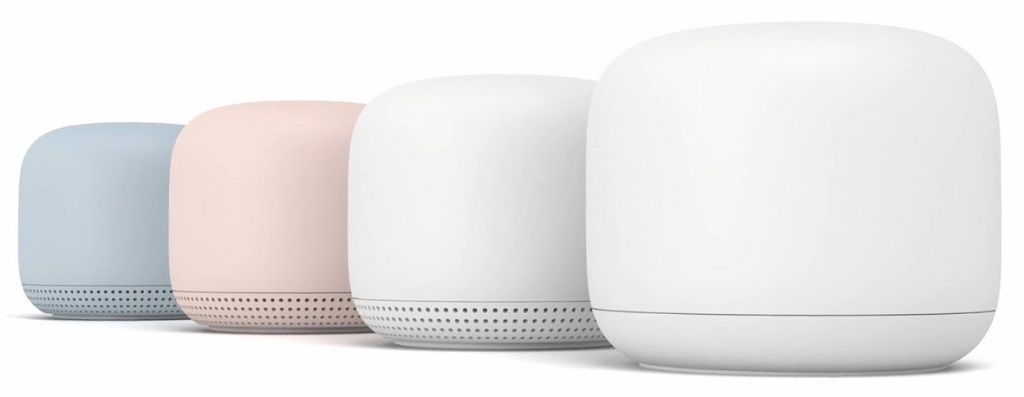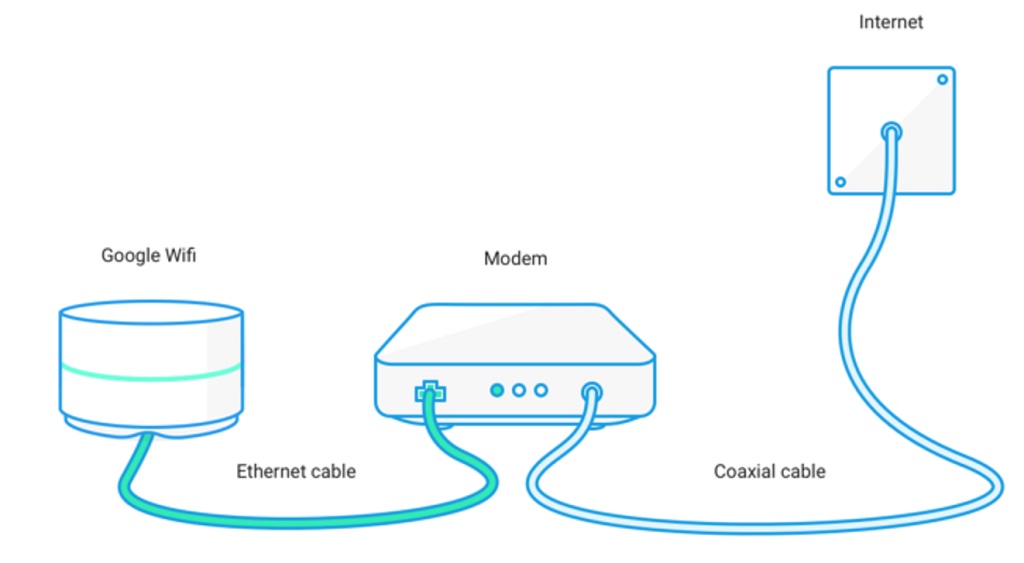When it comes to wireless routers, most of us will be familiar with certain brands like Asus, Linksys, TP-Link, or Netgear. However, did you know that Google also produces a WiFi router? The Google router has been around since the end of 2016 and is currently in its second generation.
If you're in the market for a new home router or even one for a small office, you can consider one of these. However, let's first dig deeper and learn more about the Google WiFi router.
What is the Google Router?

The Google router is a wireless router developed and manufactured by Google. That's quite interesting, given that Google doesn't produce much hardware independently. Google works in partnership with specific brands or companies for most of its devices.
Like most routers, it aims to provide strong WiFi coverage to homes or small offices. However, the Google router's highlight is smart home integration.
Smart home integration doesn't just mean it works with Google Home and connects with your IoT devices. The router helps to improve the overall network performance by using machine learning algorithms to adjust the network settings according to the number of connected devices and their usage patterns.
Google Router Quick Comparison
| WiFi | Nest WiFi | Nest WiFi Pro | |
| Type | WiFi 5 | WiFi 5 | WiFi 6E |
| Max Speed* | 1.2 Gbps | 2.2 Gbps | 5.4 Gbps |
| Bands | 2.4 and 5 GHz | 2.4 and 5 GHz | 2.4, 5, 6 GHz |
| Range | 1,500 Sq. Ft. | 2,200 Sq. Ft. | 2,200 Sq. Ft. |
| WiFi Security | WPA3 | WPA3 | WPA3 |
| Speakers | No | No | Yes |
| Official Price | $99.99 | $169 | $199.99 |
*theoretical speed
Google Router Currently Comes in 3 Variants
There are currently several WiFi router options from Google. These include Google WiFi, Nest WiFi, and the Nest WiFi Pro. Each of these share core features but also offers some independent advantages.
Google WiFi is the most basic router, Nest WiFi is the upgraded version of Google WiFi with a smart speaker feature, and Nest WiFi Pro is the most advanced router with more coverage and network management options.
Google WiFi

This router is the original one from Google. It uses a mesh network system, meaning multiple devices combine to provide more extensive WiFi coverage. You can easily cover any location, even those of up to 1,500 square feet.
Google WiFi offers only two Gigabit Ethernet ports and lacks the built-in speakers and microphones of the Nest devices. Device management is also basic, so it's simple but less configurable.
Nest WiFi

Nest WiFi is an upgraded version of Google WiFi. It bundles new features like built-in speakers and microphones. These features fit the Google Home concept, allowing you to use the Nest WiFi as a smart speaker.
Thanks to this integration concept, you can use the Nest WiFi to make phone calls, play music, and control other smart home devices. Certainly not typical of your average WiFi router. Like Google WiFi, Nest WiFi covers up to 2,200 square feet.
Nest WiFi Pro

Nest WiFi Pro is the most advanced among the three of Google's routers. It covers up to 2,200 square feet of coverage and has two Gigabit Ethernet ports. It also includes built-in speakers and microphones and advanced network management features.
While automatic updates for routers may be the norm, Nest WiFi Pro's highlight is in its machine learning algorithms. These can automatically adjust network settings according to the number of connected devices and their usage patterns.
WiFi Coverage and Performance
All of Google's router models can technically cover most standard homes. The coverage areas range from 1,500 to 2,800 square feet. However, it's important to note that these ratings are for unimpeded signals.
Regular homes with halls, furniture, and other blocking elements will find a coverage distance drop. The best way to overcome this weakness is to place the router in a central location with minimal blocking features to all areas you want to be covered.
Performance is different, and the Nest WiFi Pro is a beast. WiFi 6E on the Nest WiFi Pro gives you theoretical maximums of up to 5.4 Gbps. Not as good as some monster gaming routers like the Asus ROG Rapture GT-AXE 16000, but with a much smaller price tag.
Smart Home Integration
Earlier, I covered the highlights of Google's smart home interaction features, and it's an integral part of the mechanics at play. Imagine your router becoming the central hub of a smart home, and things will focus.
For example, my non-Google router home uses various technologies and apps. With the Google Nest system, you can use a single device to turn off lights, adjust thermostats, lock doors, and more. All you need is to say, “Hey, Google.”
Network Management and Security
When I first looked at the Googlerouter series, my thoughts on security weren't flattering. After all, dedicated networking brands still release relatively insecure consumer devices today. Then the realization hit me.
Because of the holistic integration features on Google routers, they come with basic security features that consider many areas. For example, you get extensive parental controls, smart network management, automated updates, and the newest encryption capabilities.
One major shortcoming in terms of security is the inability of Google routers to support a VPN on the hardware directly. You can only install a VPN on each of your devices and use that as a means of digital security and privacy.
Because of this, I highly recommend Google router users consider Surfshark VPN. It's fast, secure, doesn't log activity, and offers unlimited simultaneous device connections. Alternatively, you can give NordVPN a go. It's my favorite VPN and great for media streaming.
Get Surfshark VPN
Surfshark protects as many devices as you have – no questions asked.
How to Set Up Your Google Router

Like most things Google, the company has made setting up its routers simple. It's even better since the setup is app-based rather than requiring you to meddle with an antiquated router interface on your web browser.
Here is an essential guide to setting up your Google Router;
- Remove the router and check that you have all the components as required. The standard package includes the router, power adapter, and Ethernet cable.
- Connect the power adapter to your router and plug it in. You must also use the Ethernet cable to connect the router to your modem. Once everything is connected, turn on your router.
- Use your smartphone to download the Google Home app. Once installed, launch the app and select “Set up a new device,” and choose “Google Nest WiFi.” Next, follow the on-screen instructions to start the setup process.
- You'll need to scan a QR code with your phone. The code is on the bottom of the router.
- Once you've scanned the code, you can continue to follow the on-screen instructions to configure the router. The process includes choosing a WiFi network name and password. You can then access the Internet by connecting to the network name and using your password.
Google Router Hardware Requirements
To use a Google WiFi Router, you must have the following existing hardware in place;
- Broadband modem with an Ethernet port
- Smartphone or tablet running Android 5.0 or newer. Apple users will require iOS 10 or later to use the Google Home app.
- Ethernet cable
- One free power outlet.
Where to Buy Your Google Router
Depending on your location, there are several choices for purchasing a Google router. The most convenient option would be an online platform such as the Google Store, eCommerce marketplace, or another online retailer.
Here are some options;
- Google Store – You can purchase Google Routers directly from the Google Store. This option is the safest, but it may not always be available in your location.
- Newegg – Although Newegg has its ups and downs, it's one of the largest tech eStores online. Naturally, it also carries the full range of Google routers.
- Best Buy – This popular electronics retailer carries many electronic products and appliances, including Google Routers.
- Amazon – Amazon.com is the granddaddy of online marketplaces, and several merchants will typically offer Google Routers for sale.
- B&H Photo Video: B&H Photo Video is a well-known electronics retailer that sells Google Routers online.
- Walmart: Popular for many things, Walmart may seem like a strange choice for networking equipment. However, it does carry Google routers.
Best Alternatives to Google Routers
Due to their integration features, there are no direct competitors to Google routers. However, several brands offer a much broader range of routers that may be more suitable for your needs. These may be faster, provide different features, or boast a wider port selection.
Here are some of the top router brands that make good alternatives to Google routers;
- Asus – My favorite among the brands, Asus has been making routers for a long time. Their latest routers are fast and powerful, although they have a comprehensive range to suit all budgets. Prepare to spend a lot of money if you want their top-of-the-line models.
- Netgear – Similar to Asus, Netgear is another strong name in the networking space. It offers fewer models, but its high-end models are hard to beat in performance.
- TP-Link – Although TP-Link provides a wide variety of networking gear, its routers are somewhat less appealing. Consider this brand if you're looking for something budget-oriented or need specific additional networking equipment.
Final Thoughts and Recommendations on Google Routers
Honestly, I've not implemented Google routers at home for several reasons. My location doesn't have direct access to these products, and parallel imports are risky. However, the more important aspect is that the Asus router I'm using is robust and highly customizable, thanks to third-party firmware.
For those who have access to Google routers, I highly recommend considering one if you have simple needs and limited technical skills. They're incredibly easy to set up and manage, and the automation in Google Home is a godsend.